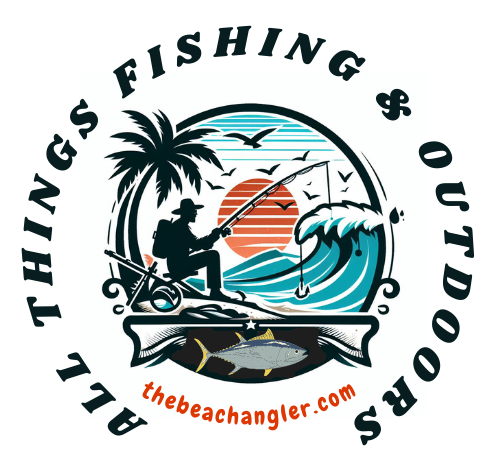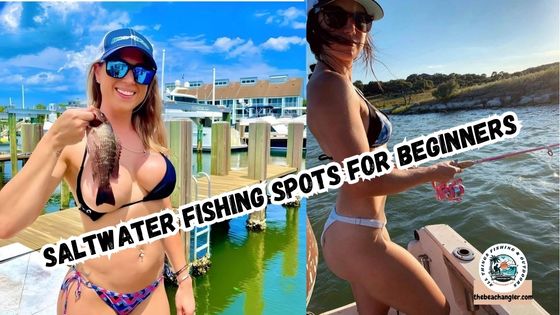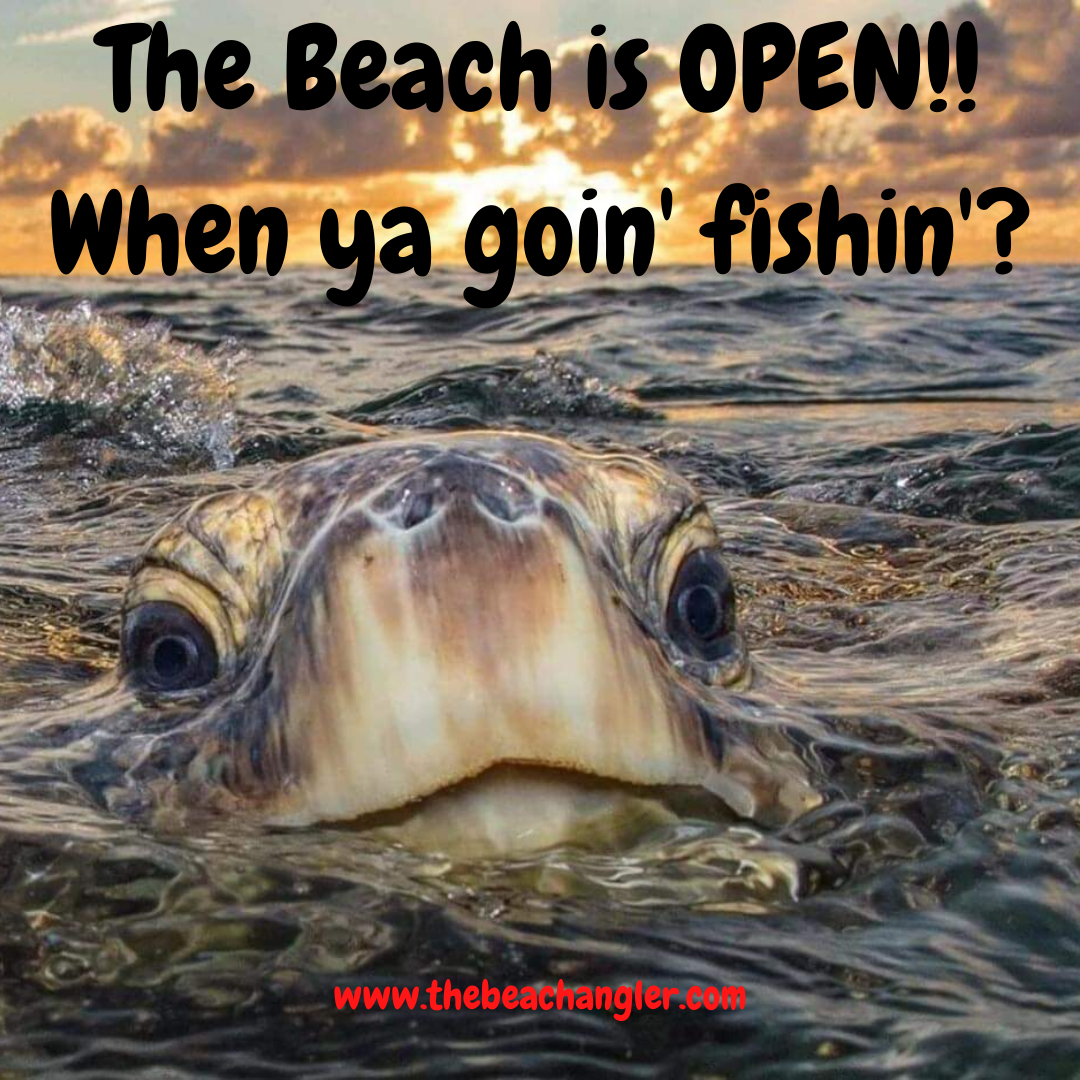Saltwater fishing is both fun and rewarding, especially for those who are just starting out. But what are the best saltwater fishing spots for beginners? In this article, we’ll attempt to answer that question by taking a look at some of the best saltwater fishing options for beginners.
QUICK LOOK: Best Saltwater Fishing Spots for Beginners
- Pier Fishing: Piers are great saltwater fishing spots because they act as a solid, elevated platform above the water. This makes it much easier for me to cast a line without needing a boat. Bait and tackle shops are often close by, and many piers rent out gear, so there’s no need to spend a lot to get started.
- Shore Fishing: Fishing from shore, which includes beaches, jetties, and rock walls, has always felt welcoming to me. I like that I can start with the basics and just walk to the water’s edge. It’s also easy on the wallet since I don’t need to pay dock fees or rent gear.
- Inshore Fishing: Inshore fishing is all about staying close to the coast. I usually target shallow waters that are home to fish such as spotted seatrout, redfish, snapper, and sometimes flounder. These areas often have public parking, and the walk from the car to the fishing spot is usually short
- Kayak Fishing: Paddling out just a few hundred feet opens up reefs, grassy shallows, and channels where bigger or different types of fish often roam. Fish like speckled trout, snook, and even tarpon may be within reach for patient beginners in popular kayak-friendly waterways.
One of the great things I’ve learned is how many different ways beginners can enjoy this hobby, even if you don’t have experience or a boat. A little preparation goes a long way in helping you catch those first fish and build confidence. Here, I’m sharing my favorite saltwater fishing spots and tips that are perfect for beginners.
Saltwater Fishing Spots Beginners Can Rely On
It’s exciting to stumble upon how many places are open to new anglers. Most of the time, I find that pier fishing and shoreline fishing are two of the easiest ways to get started. If you prefer a little more adventure, a small kayak can open up more possibilities close to shore. No matter where you choose, each area comes with its own unique benefits and types of catch.
Pier fishing and inshore spots are especially good first choices, not just for their convenience, but also because they provide a safe, welcoming atmosphere where I can learn at my own pace. Even if I make a mistake, there’s always someone nearby for advice or a friendly chat.
Why Pier Fishing Makes Things Easier
Piers are great saltwater fishing spots because they act as a solid, elevated platform above the water. This makes it much easier for me to cast a line without needing a boat. Bait and tackle shops are often close by, and many piers rent out gear, so there’s no need to spend a lot to get started. I remember my first time on a pier: I could ask questions, buy live shrimp, and get help on what’s biting that day.
The fish species I often catch from piers include croakers, mackerel, perch, small sharks, and striped bass. Because piers attract both fish and fishermen, I pick up tricks from regulars just by listening in. Many piers have cleaning stations and restrooms, making long days by the water comfortable and stress-free.
Inshore and Shoreline Hotspots for Beginners
Fishing from shore, which includes beaches, jetties, and rock walls, has always felt welcoming to me. I like that I can start with the basics and just walk to the water’s edge. It’s also easy on the wallet since I don’t need to pay dock fees or rent gear.
Inshore fishing is all about staying close to the coast. I usually target shallow waters that are home to fish such as spotted seatrout, redfish, snapper, and sometimes flounder. These areas often have public parking, and the walk from the car to the fishing spot is usually short.
Local parks and access points are good places to look for productive spots. In my case, I always check if an area is public or private before I set up. Beaches along the Gulf Coast or the Atlantic usually offer long stretches of accessible sand for easy casting.
Beyond basic beaches, rock walls, and jetties can really pump up your options for species like sheepshead and black drum. Observing tidal pools or searching for deeper pockets along the shore often reveals hiding spots for game fish. In some spots, nearby baitfish schools are easy to spot, making these locations extra attractive when timed with tide changes.
Small Boat and Kayak Spots Worth Your Time
When I became comfortable with fishing from the shore or pier, I wanted to reach a little further. That’s when I tried kayak fishing in the flats and calm bays. Paddling out just a few hundred feet opens up reefs, grassy shallows, and channels where bigger or different types of fish often roam.
Kayaks and small flats boats are relatively affordable and portable. They’re stable enough for beginners and let me sneak up on fish quietly. I usually launch from a sheltered beach or boat ramp, always double-checking local regulations for special no-fishing or protected zones. It’s necessary to wear a life jacket and stow safety gear every time.
I find that the action can get exciting pretty fast, especially when schools of baitfish are present. Fish like speckled trout, snook, and even tarpon may be within reach for patient beginners in popular kayak-friendly waterways. If you’re up for some extra effort, try drifting quietly along oyster beds or near small inlets—often you’ll hook into something bigger than from the shore.
How to Pick the Right Gear for Saltwater Fishing Spots
The tackle I pick for each fishing spot depends on where I’ll be and what I hope to catch. For piers and inshore fishing, I recommend a medium or heavy-action spinning rod that’s 6 to 9 feet long. This gives me enough strength without feeling too bulky. I usually rig my reel with a 15- to 20-pound test monofilament line, which holds up well if I hook something larger. A hoop net or pier gaff is handy for bringing in big fish over railings.
Live bait, like shrimp or squid, is a reliable choice for new anglers. If you prefer, artificial lures work well, but I find myself sticking to live bait when learning new spots since it attracts more fish with less effort. Double-checking my knots and making sure I have backup tackle in my bag keeps my day stress-free.
A small, waterproof tackle box will fit right into a kayak or backpack and make it easy to stay organized. Weights and floats become important when fishing on windy days or in choppy conditions—having a few sizes handy really helps. Don’t forget long-nose pliers and a razor-sharp fishing knife so you’re always ready for a quick rig change or bait swap.
What I Watch For: Finding Productive Saltwater Fishing Areas
When looking for productive fishing spots, I pay close attention to natural clues. Seabirds diving, splashes near the surface, or the presence of baitfish are all good signs. I also review local maps and nautical charts to spot underwater structures like reefs, jetties, sandbars, and drop-offs. These locations often draw more fish since they offer food and shelter.
Checking out recent fishing reports from bait shops and online message boards lets me stay up to date. You can often track down what’s currently active along a certain stretch of coast. Sometimes, a little scouting trip before your main outing pays off, especially if you look for shelly bottoms or grass beds known to attract fish.
Getting Started: Saltwater Fishing Steps for New Anglers
Starting out in saltwater fishing goes more smoothly when I follow a simple set of steps. Here’s what I suggest for beginners:
- Pick a Safe, Accessible Spot: Choose a public pier, jetty, or shoreline with easy access and good safety records.
- Gather Beginner Gear: Bring a medium spinning rod, a reliable reel, and a tackle box with spare hooks, sinkers, and pliers.
- Buy or Collect Bait: Shrimp, squid, or cut bait are good options that I rely on for a wider chance at catching local fish.
- Check Local Rules: Look up local fishing regulations, size limits, and required licenses so there are no surprises.
- Fish at the Right Times: Early morning or later in the evening, especially around changing tides, are usually the most active periods.
Following this plan helps me focus more on enjoying the experience and less on troubleshooting common mistakes. Don’t hesitate to ask nearby anglers for their advice or recommendations on what’s working lately.
Challenges Beginners Face and How I Work Through Them
Every time I go fishing somewhere new, I try to remind myself that small setbacks happen. Not getting bites or losing a fish is part of the learning curve. Weather changes can impact safety and comfort, so I always check forecasts before heading out. Windy days, strong currents, and sudden rain get in the way quickly, but choosing a sheltered pier or a leeward shoreline helps.
Another challenge is keeping track of local fishing regulations. Many piers or parks post them clearly, but it’s easy to double-check online or through state fish and wildlife websites. That way, I avoid unexpected tickets and do my part to preserve local fish populations.
Bait Loss and Rig Snags
Losing bait or getting snagged is pretty common, especially around rocks, pilings, or reefs. To work around this, I keep extra hooks and leader material in my tackle bag. Changing rigs or repositioning myself usually helps me get back to fishing quickly.
Sometimes switching to a one-hook rig or using a float above rocks prevents more loss. If your line tangles or snaps, take a minute to check for rough spots on your line and retie hooks if needed.
Dealing with Crowds
On busy weekends, some fishing spots, like piers or shorelines, can get crowded. I prefer going out early in the day or exploring smaller, lesser-known spots nearby to find more space and less competition for the best casting positions. If crowds can’t be avoided, being patient and friendly often leads to better cooperation, and you might even make new fishing friends.
Tips to Improve Your Saltwater Fishing Experience
The more time I spend on the water, the better I understand the habits of both fish and other anglers. Here are a few practical tips I’ve picked up:
Watch the Tides: Tidal movement stirs up food, bringing more fish closer to shore or piers. Planning trips around high or changing tides gives me a bit of an advantage.
Bring Sun Protection: Hats, sunglasses, and sunscreen are vital to staying comfortable outdoors, fully exposed to the sun and salt spray.
Keep it Simple: Especially in my first few trips, using straightforward rigs and not overthinking my lures helps me focus on learning the basics and having a good time.
Be Polite and Ask Questions: Other anglers are usually happy to share tips on local tactics, gear tweaks, or nearby hot spots. Being friendly keeps the experience positive for everyone. If you’re ever unsure, watching what the locals are doing can clue you in to what’s working that day.
Frequently Asked Questions: Saltwater Fishing Spots for Beginners
Here are a few questions I hear most often from new saltwater anglers:
Where should I start if I’ve never fished saltwater before?
Public fishing piers or popular local beaches are reliable, safe fishing spots for beginners. These areas often have information signs, staff, or regulars who are happy to offer tips.
Do I need a fishing license?
Most coastal states require some kind of fishing license for saltwater fishing, even from piers or beaches. Some piers include the license in an entrance fee, but it’s important to check your local regulations first.
What should I bring on my first saltwater fishing trip?
A basic spinning rod and reel, plenty of extra hooks and sinkers, a bucket for your catch, live bait or artificial lures, sun protection, snacks, and a drink will get you off to a good start.
Is pier or shore fishing better for complete beginners?
Pier fishing is often the easiest way to get familiar with saltwater fishing because there’s structure, safety, and lots of advice around. Shore fishing is also great if you like quieter spots and don’t mind carrying your gear a bit further.
Final Thoughts on Best Saltwater Fishing for Beginners
Saltwater fishing has become a big part of my outdoor time, and I still find new things to enjoy with every trip. Whether you try your luck on a pier, beach, or from a kayak, these beginner-friendly fishing spots offer a great way to build your skills and enjoy the sport.
Take your time, pay attention to your surroundings, and remember that the best way to improve is to get out and fish as often as you can. You’ll be surprised at the variety of species you can track down, and with enough patience, you might even land a real trophy fish to remember your first adventures by.
Check Out Our Most Recent Articles:
- Using a Personal Watercraft For Saltwater Fishing
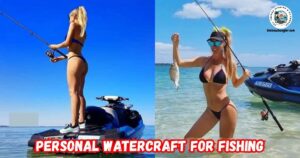
- 5 Advantages of the Penn Squall Low Profile Baitcasting Reels
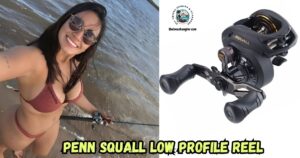
- Electronic Fish Finders For Kayak Fishing
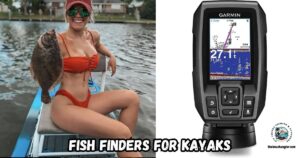
- What’s New From ICAST 2025

- 5 Budget-friendly Saltwater Fishing Kayaks For Beginners
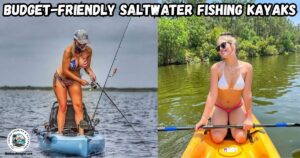
- 12 Tips for Fishing Baffin Bay, Texas
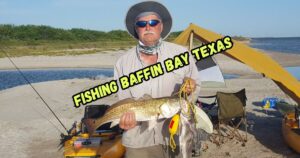
As always, stay safe, enjoy the journey, and please try to leave it cleaner than you found it. If you have any comments, questions, ideas, or suggestions, please leave them in the comment section below, and I’ll get back to you ASAP. You can follow us on Facebook: Rex The Beach Angler, Instagram: thebeachangler7, Twitter: @AnglerBeach, and YouTube: Man Art Creations.
P.S. Thanks so much for checking out our blog; we really appreciate it. Just so you know, we may receive a commission if you click on some of the links that appear on our site. This helps us keep our content free and up-to-date for everyone. We appreciate your support!
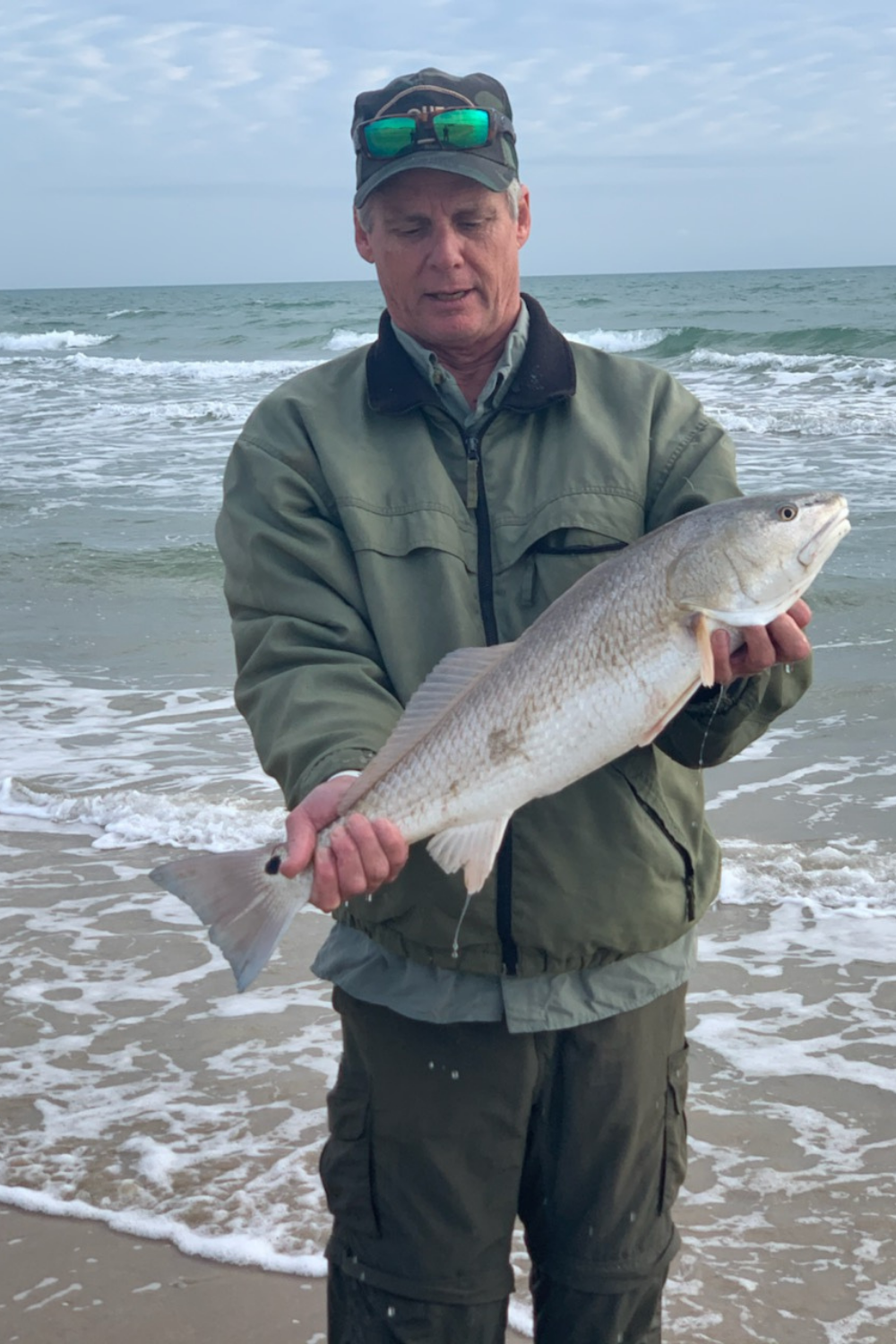
A life long surf fisherman with 50+ years of experience, I am also an avid hunter and outdoorsman. I will be sharing my passion for the outdoors with you so be prepared for hunting, fishing, camping, hiking and more. Along with gear reviews and the latest trends and innovations in the outdoor industry.
